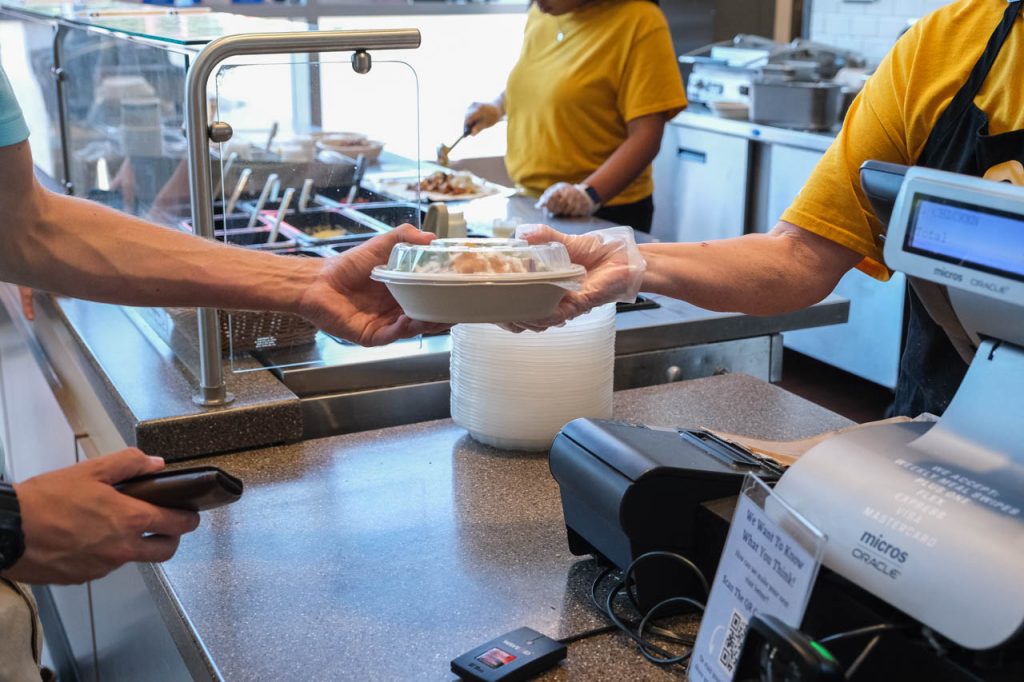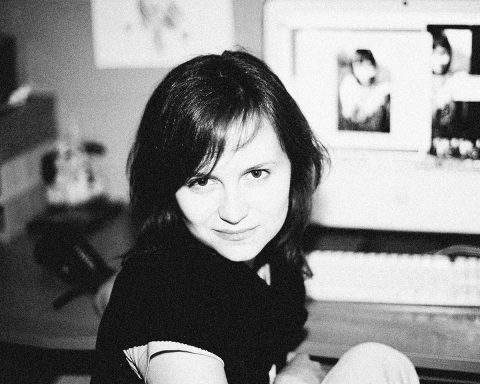“My profile became what I wanted you to know,” said Ellis Farese, a sophomore at the University of Mississippi. “I was presenting a persona that I let define me, and it honestly ended up confusing me. I didn’t know who I was or what I liked. Everything that I posted became very calculated and I got frustrated with myself.”
Once a casual and carefree place for communication, camaraderie and sharing, social media – and its impact on everyday life — has drastically changed in recent years. Many members of Generation Z are stepping away from the screen and drawing new boundaries, citing online platforms like Instagram and TikTok as the source of increased anxiety and self-doubt.

Photo courtesy Addie Thompson.
“When I have a few extra minutes, I turn to social media, even though it’s not actually feeding me anything,” said Mississippi State University senior Addie Thompson. “It’s just a way to escape.”
Thompson has maintained an online presence on Instagram, YouTube and her personal blog for more than six years. However, she doesn’t always feel content creation is fulfilling.
“Whenever I try to have the perfect feed or take the perfect pictures, it ends up not being fun anymore,” Thompson said. “It’s more stressful than enjoyable. Although it sounds cool to have a career on social media, trying it out drained me more than I thought it would.”
Although more common among younger generations, adamant social media users of any age may describe feeling fatigued or burned out following periods of increased interaction online. This phenomenon is known as Social Media Fatigue or Social Media Burnout. In a 2021 study, researchers Han Zheng and Rich Ling defined it as “a set of negative emotional responses to activities on social media platforms, such as tiredness, burnout, exhaustion, frustration, and disinterest toward communication.”
Burnout can be caused by many factors, including comparison to others, fear of missing out, information overload and simple overuse. Social media users are exposed to new ideas and information each time they refresh an app. Never-ending streams of photos, videos and news can easily become addictive and in some cases overwhelming.
In an effort to escape her fatigue, Thompson deleted both Instagram and TikTok in 2022 for Lent, a 40-day season of prayer, fasting and almsgiving in the Catholic religion. Once Lent ended, she decided to spend less time on her personal Instagram page and focus on her lifestyle account, a digital scrapbook titled “Life By Addie.”
Thompson says she has since been able to “shift gears” and escape the cycle of “too much comparison and too much scrolling,” and she isn’t afraid to delete social media when she feels it is harmful to her happiness or productivity.
Farese has decided to step away from the apps altogether.
“A while ago, I deleted Instagram and TikTok,” Farese said. “I felt like I was making social media too serious for myself, I couldn’t do it anymore.”
While she was in high school, Farese was especially active on Instagram.
“At first, I was expressing myself, posting photos and sharing experiences both with my friends and people I didn’t know that well. There’s no harm in that,” she said.
Although she enjoyed it, she felt the app negatively impacted her mental health and sense of self. Her online presence became a “persona,” someone calculated, someone who wasn’t herself.
Calculation is often necessary, as maintaining and achieving relevance on social media has become increasingly challenging over the years.
“It’s become a lot more fast-paced,” said Alex Parsa, a viral TikToker and sophomore at the University of Mississippi. “Everybody’s constantly moving on to the next thing. Their tastes change quickly and they aren’t satisfied.”
Parsa began posting on TikTok during his sophomore year of high school, shortly after its rebrand from its former name, Musical.ly. Although he used the platform on a personal basis at first, Parsa was quickly swept into the world of professional content creation. He amassed over 1 million followers before deciding to step away from the app in 2021.
“What I learned was to enjoy the views and such while you have them because it’s not going to last forever,” Parsa said. “Especially on an app like TikTok, all it takes is a couple of swipes to be on to the next person or trend.”
In the height of his career, Parsa experienced several bouts of severe social media fatigue.
“Numbers get in your head and you start to doubt yourself,” Parsa said. “Even though you know it has nothing to do with your actual life, you can get worked up about it.”
Parsa said that this can really take a toll on people over time.
“The amount of stress and self-consciousness social media produces is unlike anything else,” he said. “It really does take a toll on your brain and your mental health.”
Social media may also cause stress due to the amount of time required to create and maintain a relevant presence. Both Parsa and Instagram influencer Corynn Timmerman say their online presence has required them to spend an average of five hours online per day.
“For me, it’s not only Instagram, but TikTok, Instagram Reels and Pinterest as well,” Timmerman said. “I post at least three TikToks per day, two Reels per week, and an Instagram picture each day.”
Editing TikTok and Reels videos can take several hours, with each of Timmerman’s Instagram photos requiring 20 minutes of engagement with her followers both before and after posting, in addition to shoot and editing time. This engagement ensures that she stays in touch and is noticed by the platform’s algorithm.

Timmerman, a 2022 graduate of the University of Mississippi, produces and posts outfit and style inspiration on all three platforms. Working alongside brands such as Princess Polly and Pepper Mayo, she says she could make influencing her full-time job, but she does not plan to.
“It’s more of a hobby for me,” Timmerman said. “I feel like once I were to make it a full-time job, I wouldn’t be as excited about it.”
Before full-time influencing became a possibility for Timmerman, she posted style-based content consistently for two years with little to no pay.
“It’s hard when you see other people growing fast,” she said. “It’s easy to compare yourself to others, what they’re posting and their growth, but from where it started to where it is now, my count has exponentially grown, which is amazing.”
As her following has grown, Timmerman has been able to create and maintain balance, both in her presentation online and in her real life. Timmerman makes a point to post candid, unfavorable moments on her Instagram stories and to spend time offline.
“I think it’s important to show your bad days, too,” she said. “Something that I try to portray to my followers is that I’m a real person. I am not perfect.”
Tillerman said that she makes sure to keep real life and online life balanced.
“It’s also important to separate your online time from your real life and be present with your people,” she said.
Timmerman is able to balance her full time job with her personal life by posting consistently Monday through Friday and putting her phone away on the weekends. However, no solution is flawless.
“There have been times when I go out to shoot and I don’t like anything,” Timmerman said. “Whenever I do have a bad content day, it sets me back and I do go through a rough patch of not wanting to do it. Sometimes I need a couple of days to refresh.”
On the other hand, when Timmerman is proud of her content, or when she is able to inspire creativity in others, she is “motivated to get more.”
If one is able to find the balance, social media can be a beautiful tool that enriches and inspires their lives. Both personal and professional profiles can be used to express one’s self and to connect with those like one’s self.
Without proper balance and self-reflection, social media can quickly become dangerous, causing dissonance within one’s self-image, sparking anxiety and potentially causing permanent harm to one’s mental health.

















